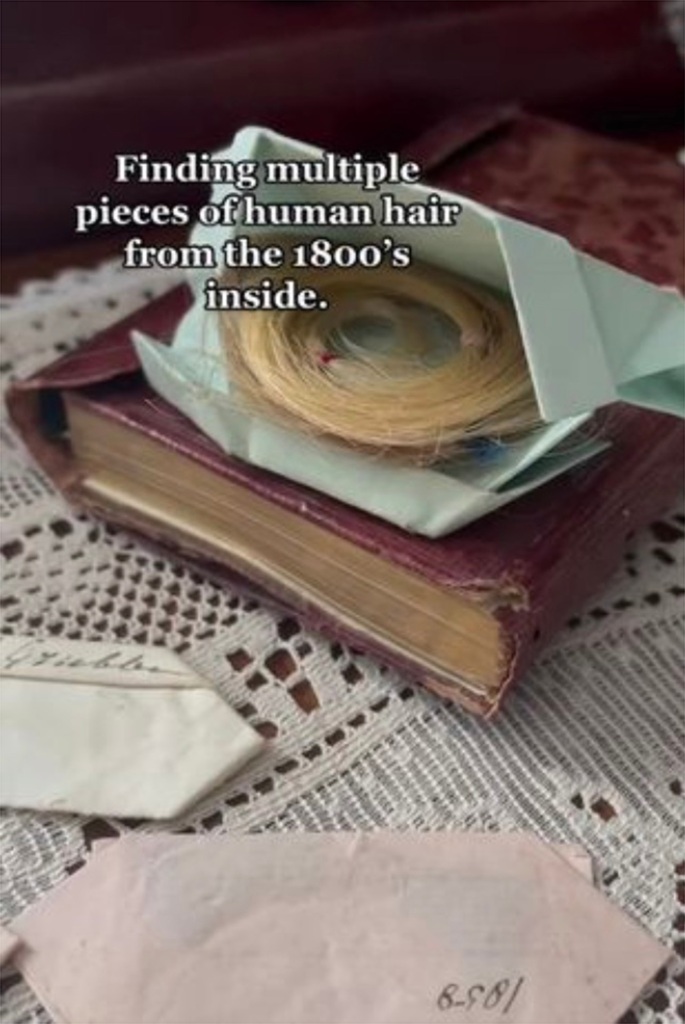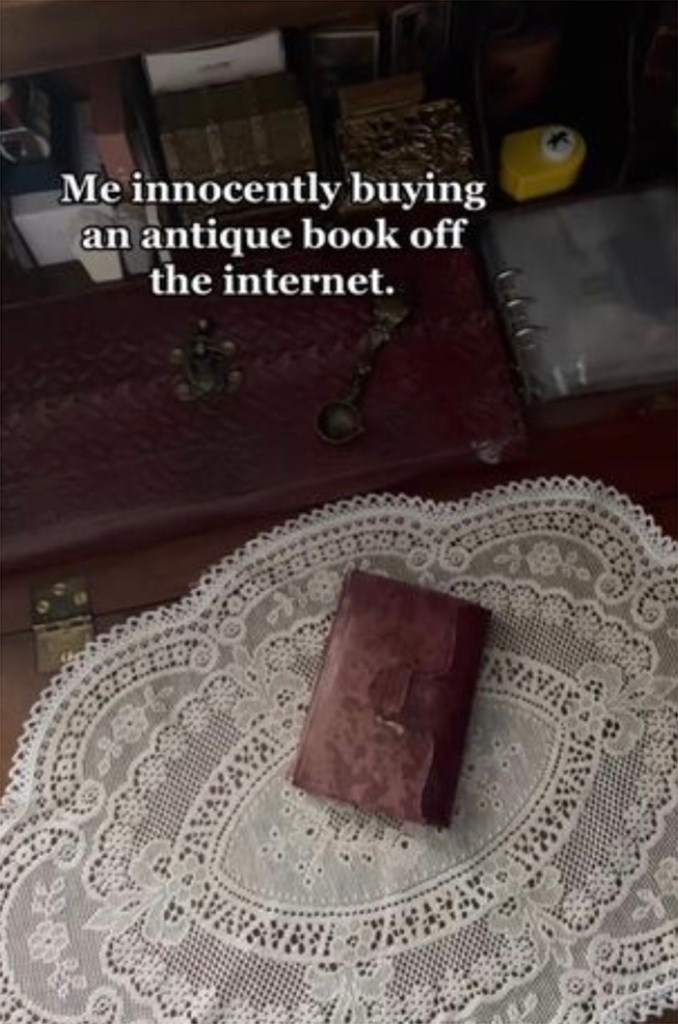Human hair found in antique book from the 1800s
A seemingly innocent book from the 1800s — purchased off the internet by an antique collector — delivered a spooky mystery: a packet of human hair stashed within its pages.
Christina Dyer, who posted the video on TikTok, told her 120,300 followers that the small leather-bound book dates back to the Victorian Era, the 63 year period from 1837 to 1901.
In the now-viral clip, which has racked up more than 2.1 million views and nearly 404,000 likes as of Wednesday afternoon, Dryer writes: “Me, innocently buying an antique book off the internet — [and] finding multiple pieces of human hair from the 1800s inside.”
According to Dyer, the hair was discovered in little envelopes bearing a person’s name, as well as a date. The book apparently belonged to someone named Julia, according to an inscription.
The TikToker also posed a question to her viewers: “Question is, what do I do with them?”
Although some social media conspiracy theorists warned her to “CALL THE COPS” to report a “serial killer,” others offered up some more reasonable history lessons.
Several people who commented on the haunting video said that during that era, it was commonplace for people to keep locks of hair of loved ones. Parents were known to cherish some of their child’s hair if they died.

“That was a common thing to do in that time, to preserve that person’s memory, or they gifted a piece of their hair as a sign of affection,” wrote one social media history buff.
“Back in the day was kind of meaningful to give pieces of your hair to your loved ones,” another chimed in.
While it may have been normal in the 1800s, several people found it creepy.


“Not me screaming CALL THE POLICE and immediately thought about some serial killer,” one user stated.
“I don’t know, but I have a bad feeling,” another added.
Dyer later revealed there was nothing sinister behind the hair’s origin story — and revealed that she managed to track down descendants of the book’s owner and asked them about their ancestor.
Read the full article Here


